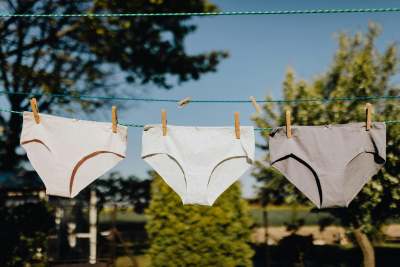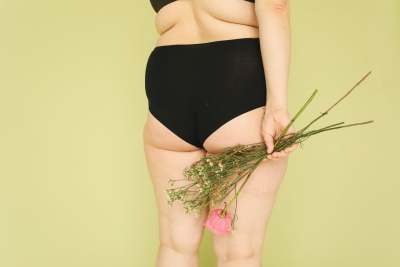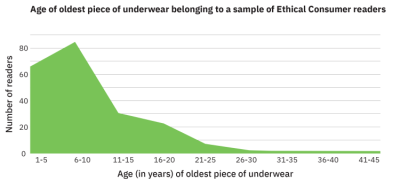Many of the garment brands that make the cheap and disposable clothing characteristic of fast fashion also make underwear. Ethical underwear brands are those which have rejected the fast fashion model and are adopting better practices such as use of organic fabrics, manufacturing in living-wage factories and avoiding the use of animal products.
But there are now lots of brands claiming to make sustainable lingerie, including the giants of the high street, and it can be difficult to know who to trust.
What do we investigate in this guide to sustainable underwear?
We look at the validity of company claims on climate, use of sustainable materials, workers’ rights, and animal welfare to calculate their ethiscores and to find truly ethical underwear brands.
We also look at the pros and cons of different fabrics and which brands are using what, options for recycling your underwear and how to buy secondhand lingerie.
We also feature a price comparison table and look at the size ranges available from all the underwear brands.
With 10 Best Buy brands and 5 recommended brands, and ratings for 41 underwear brands from popular high street choices like M&S to 'luxury' brands like Agent Provocateur, this guide has your lingerie needs covered. Read on to find out which brands are the most ethical and sustainable.







